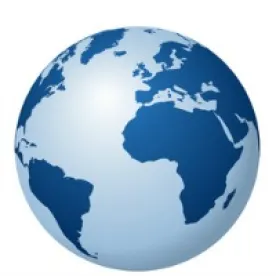For your information, on July 28, 2015, new antidumping (AD) and/or countervailing duty (CVD) petitions were filed on certain cold-rolled steel flat products from Brazil (AD & CVD), China (AD & CVD), India (AD & CVD), Japan (AD only), Korea (AD & CVD), the Netherlands (AD only), Russia (AD & CVD) and the United Kingdom (AD only). The petitioners are: AK Steel Corporation, ArcelorMittal USA LLC, Nucor Corporation, Steel Dynamics Inc., and United States Steel Corporation.
Scope
The petition proposes the following scope of investigation:
The products covered by these investigations are certain cold-rolled (cold-reduced), flat rolled steel products, neither clad, plated, nor coated with metal, but whether or not annealed, painted, varnished, or coated with plastics or other non-metallic substances. The products covered include coils that have a width of 12.7 mm wide or greater, regardless of form of coil (e.g., in successively superimposed layers, spirally oscillating, etc.). The products covered also include products not in coils (e.g., in straight lengths) of a thickness less than 4.75 mm and a width that is 12.7 mm or greater and that measures at least 10 times the thickness. The products covered also include products not in coils (e.g., in straight lengths) of a thickness of 4.75 mm or more and a width exceeding 150 mm and measuring at least twice the thickness. The products described above may be rectangular, square, circular, or other shape and include products of either rectangular or non-rectangular cross-section where such cross-section is achieved subsequent to the rolling process, i.e., products which have been "worked after rolling" (e.g., products that have been beveled or rounded at the edges). For purposes of the width and thickness requirements referenced above:
(1) Where the nominal and actual measurements vary, a product is within the scope if application of either the nominal or actual measurement would place it within the scope based on the definitions set forth above, and (2) where the width and thickness vary for a specific product (e.g., the thickness of certain products with non-rectangular cross-section, the width of certain products with nonrectangular shape, etc.), the measurement at its greatest width or thickness applies.
Steel products included in the scope of these investigations are products in which: (1) iron predominates, by weight, over each of the other contained elements; (2) the carbon content is 2 percent or less, by weight; and (3) none of the elements listed below exceeds the quantity, by weight, respectively indicated:
- 2.50 percent of manganese;
- 3.30 percent of silicon;
- 1.50 percent of copper;
- 1.50 percent of aluminum;
- 1.25 percent of chromium;
- 0.30 percent of cobalt;
- 0.40 percent of lead;
- 2.00 percent of nickel;
- 0.30 percent of tungsten (also called wolfram);
- 0.80 percent of molybdenum;
- 0.10 percent of niobium (also called columbium);
- 0.30 percent of vanadium; or
- 0.30 percent of zirconium.
Unless specifically excluded, products are included in this scope regardless of levels of boron and titanium.
Specifically included in this scope are vacuum degassed, fully stabilized (commonly referred to as interstitial-free (IF)) steels, high strength low alloy (HSLA) steels, and motor lamination steels. IF steels are recognized as low carbon steels with micro-alloying levels of elements such as titanium and/or niobium added to stabilize carbon and nitrogen elements. HSLA steels are recognized as steels with micro-alloying levels of elements such as chromium, copper, niobium, titanium, vanadium, and molybdenum. Motor lamination steels contain micro-alloying levels of elements such as silicon and aluminum but do not meet the definition of grain-oriented electrical steel (GOES) or non-oriented electrical steel (NOES).
This scope also includes Advanced High Strength Steels (AHSS) and Ultra High Strength Steels (UHSS), both of which are considered high tensile strength and high elongation steels.
All products that meet the written physical description, and in which the chemistry quantities do not exceed any one of the noted element levels listed above, are within the scope of these investigations unless specifically excluded. The following products are outside of and/or specifically excluded from the scope of these investigations:
- Ball bearing steels, as defined in the HTS;
- Tool steels, as defined in the HTS;
- Silicon-manganese steel, as defined in the HTS;
- Silicon-electrical steels, as defined in the HTS, that are GOES;
- Silicon-electrical steels, as defined in the HTS, that are not grain-oriented and that have a silicon level exceeding 1.00 percent and a surface oxide coating, to which an insulation coating may be applied (NOES); and
- Non-rectangular shapes, not in coils, that are the result of having been processed by cutting or stamping and which have assumed the character of articles or products classified outside chapter 72 of the HTS.
Cold-rolled steel is currently classified under the following Harmonized Tariff Schedule (HTS) subheadings: 7209.15.0000, 7209.16.0030, 7209.16.0060, 7209.16.0070, 7209.16.0091, 7209.17.0030, 7209.17.0060, 7209.17.0070, 7209.17.0091, 7209.18.1530, 7209.18.1560, 7209.18.2510, 7209.18.2520, 7209.18.2580, 7209.18.6020, 7209.18.6090, 7209.25.0000, 7209.26.0000, 7209.27.0000, 7209.28.0000, 7209.90.0000, 7210.70.3000, 7211.23.1500, 7211.23.2000, 7211.23.3000, 7211.23.4500, 7211.23.6030, 7211.23.6060, 7211.23.6075, 7211.23.6085, 7211.29.2030, 7211.29.2090, 7211.29.4500, 7211.29.6030, 7211.29.6080, 7211.90.0000, 7212.40.1000, 7212.40.5000, 7225.50.6000, 7225.50.8015, 7225.50.8085, 7225.99.0090, 7226.92.5000, 7226.92.7050, and 7226.92.8050. Subject merchandise may also enter under 7210.90.9000, 7212.50.0000, 7225.19.0000, 7226.19.1000, 7226.19.9000, and 7226.99.0180.
Although the HTS subheadings are provided for convenience and U.S. Customs purposes, the written description of the merchandise under investigation is dispositive.
Alleged Dumping Margins
Brazil: Up to 59.74 percent
China: 265.98 percent
Japan: 82.58 percent
Korea: 93.32 to 176.13 percent
India: 42.28 percent
Netherlands: 136.46 percent
Russia: 69.12 to 320.45 percent
United Kingdom: 76.45 to 84.34 percent
Alleged Subsidy Programs
Petitioners allege extensive countervailable government subsidies with respect to subject imports from Brazil, China, Korea, India, and Russia. Please let us know if you would like further details regarding specific subsidy allegations.
Estimated Schedule of Investigation
- August 17, 2015 – U.S. Department of Commerce (DOC) initiates investigation.
- August 18, 2015 (estimated) – U.S. International Trade Commission (ITC) holds staff conference.
- September 11, 2015 – Deadline for ITC preliminary injury determination.
- October 21, 2015 – Deadline for DOC preliminary CVD determination (if not postponed).
- January 4, 2016 – Deadline for DOC preliminary AD determination (if not postponed).





 />i
/>i

